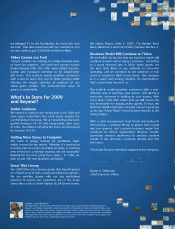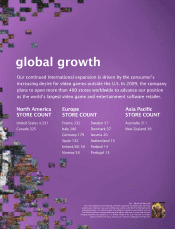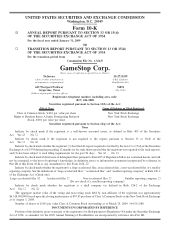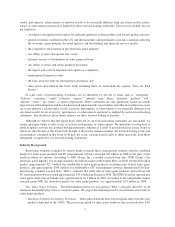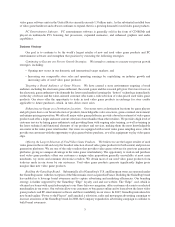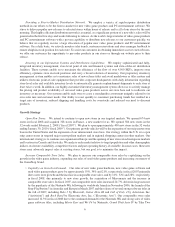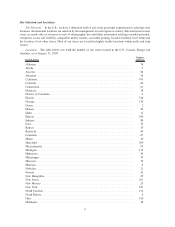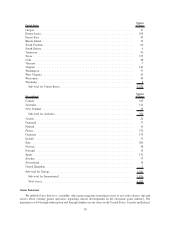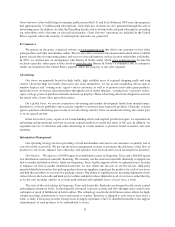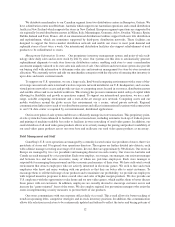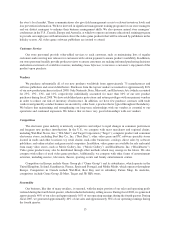GameStop 2008 Annual Report Download - page 18
Download and view the complete annual report
Please find page 18 of the 2008 GameStop annual report below. You can navigate through the pages in the report by either clicking on the pages listed below, or by using the keyword search tool below to find specific information within the annual report.results, performance, achievements or industry results to be materially different from any future results, perfor-
mance or achievements expressed or implied by these forward-looking statements. These factors include, but are
not limited to:
• our reliance on suppliers and vendors for sufficient quantities of their products and for new product releases;
• general economic conditions in the U.S. and internationally and specifically, economic conditions affecting
the electronic game industry, the retail industry and the banking and financial services market;
• the competitive environment in the electronic game industry;
• our ability to open and operate new stores;
• alternate sources of distribution of video game software;
• our ability to attract and retain qualified personnel;
• the impact and costs of litigation and regulatory compliance;
• unanticipated litigation results;
• the risks involved with our international operations; and
• other factors described in this Form 10-K, including those set forth under the caption, “Item 1A. Risk
Factors.”
In some cases, forward-looking statements can be identified by the use of terms such as “anticipates,”
“believes,” “continues,” “could,” “estimates,” “expects,” “intends,” “may,” “plans,” “potential,” “predicts,” “will,”
“should,” “seeks,” “pro forma” or similar expressions. These statements are only predictions based on current
expectations and assumptions and involve known and unknown risks, uncertainties and other factors that may cause
our or our industry’s actual results, levels of activity, performance or achievements to be materially different from
any future results, levels of activity, performance or achievements expressed or implied by such forward-looking
statements. You should not place undue reliance on these forward-looking statements.
Although we believe that the expectations reflected in our forward-looking statements are reasonable, we
cannot guarantee future results, levels of activity, performance or achievements. We undertake no obligation to
publicly update or revise any forward-looking statements, whether as a result of new information, future events or
otherwise after the date of this Form 10-K. In light of these risks and uncertainties, the forward-looking events and
circumstances contained in this Form 10-K may not occur, causing actual results to differ materially from those
anticipated or implied by our forward-looking statements.
Industry Background
Based upon estimates compiled by various market research firms, management estimates that the combined
market for video game products and PC entertainment software exceeded $45 billion in 2008 in the parts of the
world in which we operate. According to NPD Group, Inc., a market research firm (the “NPD Group”), the
electronic game industry was an approximately $22 billion market in the United States in 2008. Of this $22 billion
market, approximately $21.3 billion was attributable to video game products, excluding sales of used video game
products, and approximately $700 million was attributable to PC entertainment software. International Develop-
ment Group, a market research firm (“IDG”), estimates that retail sales of video game hardware and software and
PC entertainment software totaled approximately $19.8 billion in Europe in 2008. The NPD Group has reported that
video game retail sales in Canada were approximately $2.1 billion in 2008. According to the independent market
research group GfK, the Australian market for video game products was approximately $1.9 billion in 2008.
New Video Game Products. The Entertainment Software Association (“ESA”) estimates that 65% of all
American households play video or computer games. We expect the following trends to result in increased sales of
video game products:
•Hardware Platform Technology Evolution. Video game hardware has evolved significantly from the early
products launched in the 1980s. The processing speed of video game hardware has increased from 8-bit
3


